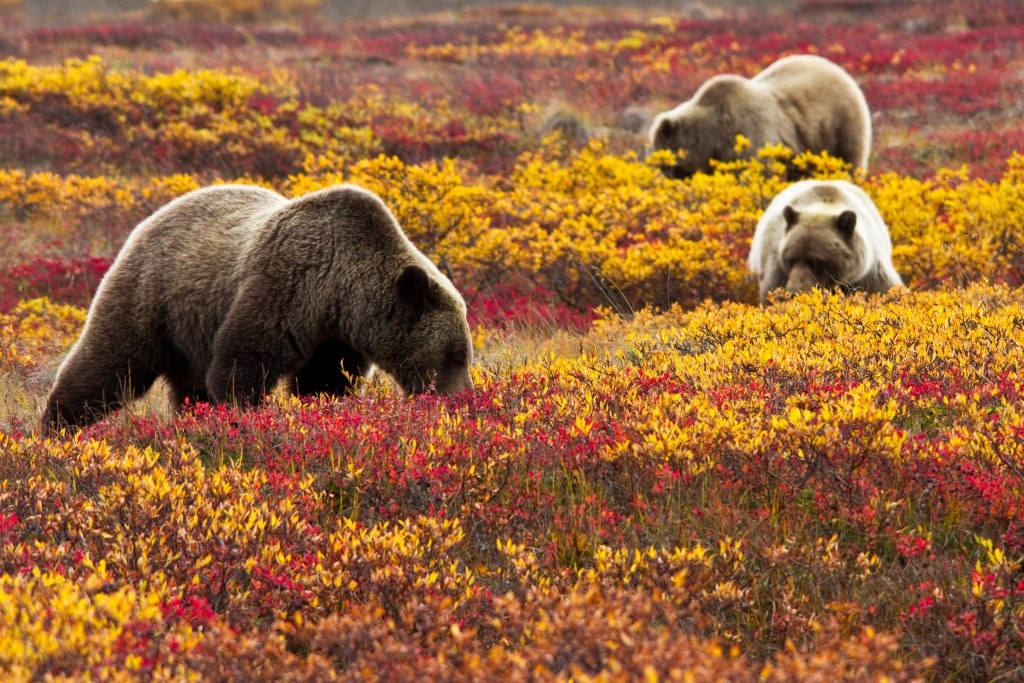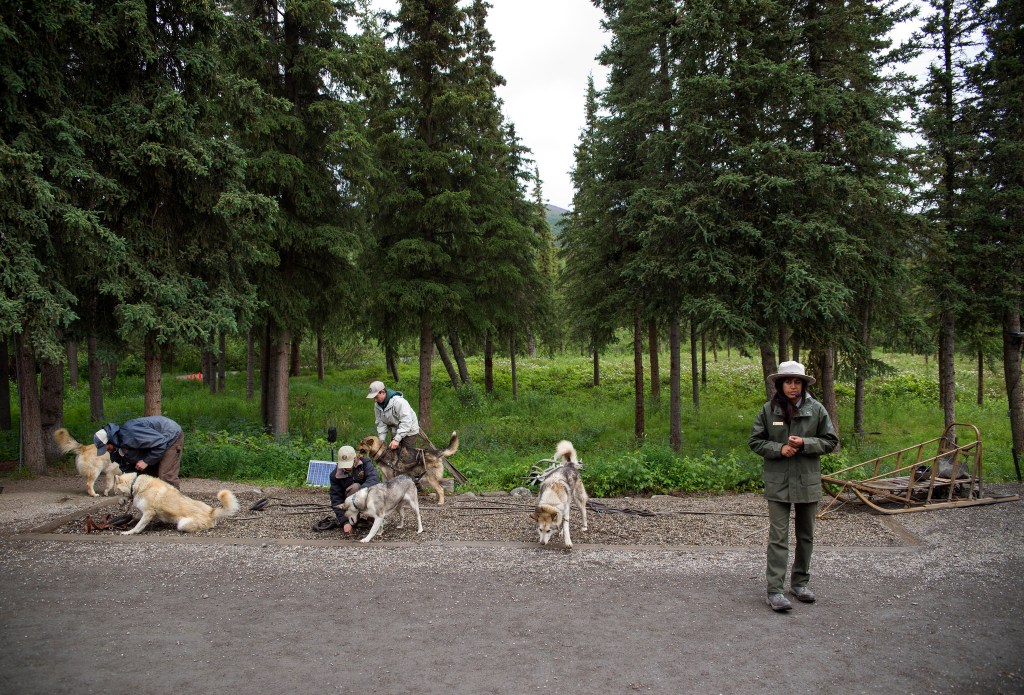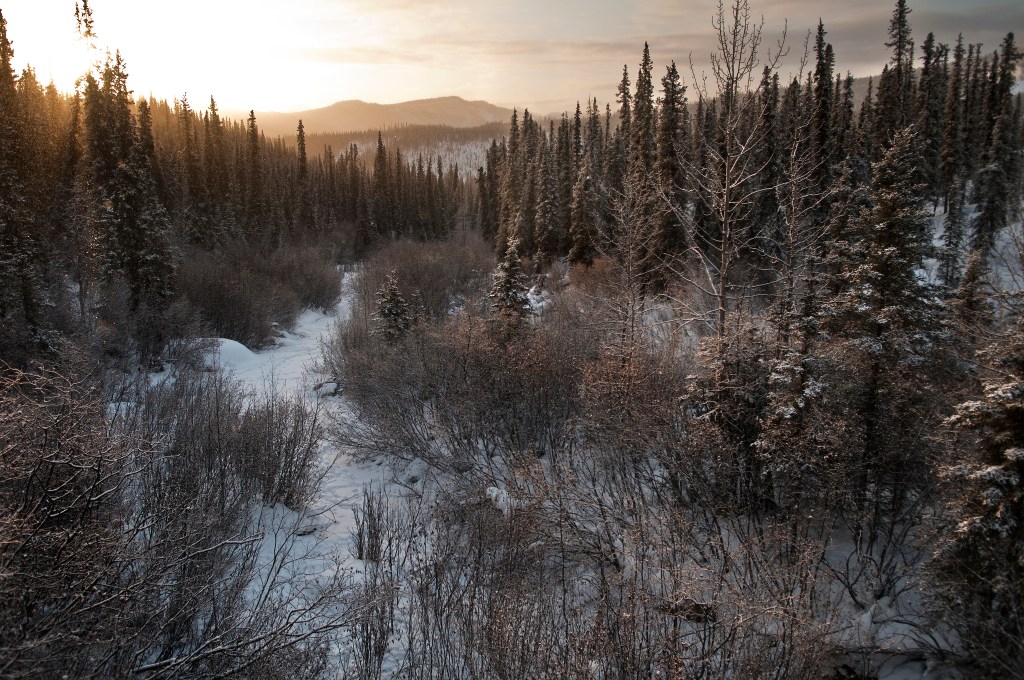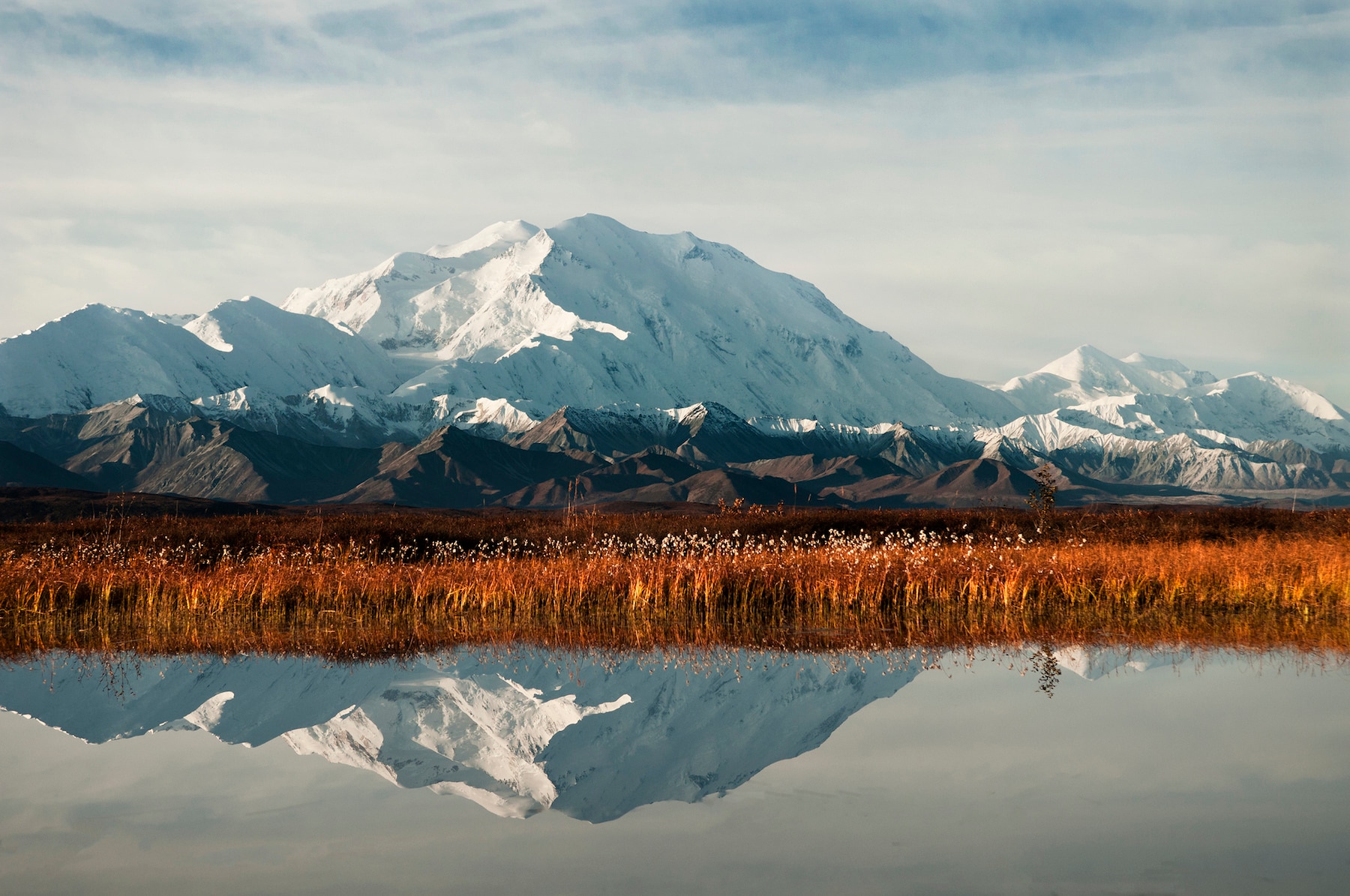In honor of its 100th birthday, Kristen Pope, who worked there for three summers, breaks down the history and rugged wilderness of this 6-million-acre park.
When Jo Wood drove the Denali Park Road for the first time 27 years ago, she saw Denali—the highest mountain in North America—and was mesmerized. The 20,310-foot Alaskan peak is often enshrouded in cloud cover, but it made an appearance for Wood and her husband.
“I remember it like it was yesterday,” Wood said. “By the time we got to Wonder Lake, I don’t think my husband and I spoke a word. We just were in awe of the grandeur of it.”
Wood’s parents, Harry and Phyllis Hassinger, were campground hosts at Wonder Lake in Denali National Park for many years, with her mother hosting for 23 summers. Though she now lives in Sequim, Washington, Wood lived in Alaska for 42 years and would visit them at the campground up to five times each summer, spending her time hiking, canoeing, picking fall berries and exploring.
This summer, she returned with her husband to celebrate the park’s 100th anniversary and attended a reunion for former park employees, many whom she got to know well during her time in the park. “It’s unlike any place I’ve ever been,” Wood said. “I’ve traveled fairly extensively but never anywhere that affected me like that place did.”

In fall, grizzly bears eat their fill of berries in Denali National Park. Photo: Denali National Park and Preserve, Flickr
Today, 600,000 people visit the park each year to see its rugged wilderness and megafauna—grizzlies, black bears, wolves, caribou, moose, Dall sheep and other critters. Every year, a thousand or so mountaineers climb Denali while many others revel in the park’s beauty from a shuttle or tour bus, or explore by foot, hiking or backpacking the largely trail-less land. The midnight sun greets summer visitors, and the Northern Lights can sometimes be seen when darkness returns.
The park was originally founded on February 26, 1917, as “Mount McKinley National Park.” Three years earlier, the Alaska Railroad Act was passed in 1914; this would bring the railway directly to the area. Conservationists knew visitation would dramatically increase, so they had to protect the area—and fast. In 1917, President Woodrow Wilson designated 2.1 million acres as a national park. However, according to park historian Erik Johnson, “From 1917 to 1921, the park was a park in name only, and there wasn’t anyone patrolling the boundaries.”
That changed in 1921. The railroad was about to open up access to the park, so Harry Karstens was hired to protect it as the park superintendent. In 1922, the park’s first seven recorded visitors came.
Many more people came on the railroad from 1922 to 1957. Early visitors stayed in primitive wall tents until the McKinley Park Hotel opened in 1939. Once road access was established in 1958, visitation rose rapidly, and when the highway between Fairbanks and Anchorage was completed in 1971, it brought even more visitors.
Expecting a huge influx of tourists during the summer 1972 season, park officials implemented a shuttle bus system for access. To this day, visitors can drive their own vehicles only to the Savage River at mile 15 of Denali Park Road, the only road in the park; to go farther into Denali, they must be on bus, bike, foot, dog sled or have a special permit.

Denali National Park’s bus system brings visitors out into the park and, if they’re lucky, to a glimpse of often-cloud-covered 20,310-foot Denali. Photo: Denali National Park and Preserve, Flickr
In 1980, the park was renamed Denali National Park and Preserve and the size increased to more than 6 million acres—larger than the state of New Hampshire. Fifteen percent of that acreage is covered by glaciers (though eight percent of the glaciers were lost from 1950 to 2010). The park also contains over 12,200 lakes and ponds.
Designated an International Biosphere Reserve in 1976, Denali is home to an astonishing number of species, including 38 mammals, 172 birds, 14 fish and 1 amphibian: the wood frog. Plants are also plentiful with 8 types of trees, 758 species of vascular plants, 380 mosses and 442 lichens.
Patricia Owen is a wildlife biologist in Denali, where she’s worked for almost 30 years. “We have vast tracts of undisturbed habitat for the most part,” Owen said. “We’ve got 6 million acres and basically a road that runs down the middle of it for a good ways. And because of that, there’s not a lot of outside influence on those animals so populations are functioning naturally.”
To maintain that healthy balance, Owen oversees the human-wildlife management program to keep both people and animals safe. She is also involved in a variety of research projects, including an ongoing investigation into bear movement patterns, examining where and when they cross park boundaries.

Mushing on Wonder Lake | Photo: Jake Frank for Denali National Park and Preserve, Flickr
Since Denali is so wild, with 2 million acres of designated wilderness land, 4 million more acres protected like wilderness, and only one road, park personnel use an unusual mode of winter transportation: dog sled.
Denali is the only national park to have a working sled dog team, and Jen Raffaeli manages the park’s kennels.
“Basically, the park service here in Denali has had sled dogs since our first superintendent, Harry Karstens, bought the first seven sled dogs in 1922,” Raffaeli said. “The early rangers used the sled dogs to patrol the newly established park boundaries to put an end to market hunting and poaching inside the park. As the ranger duties have evolved, so have the duties of the dogs.”
Instead of assisting with law enforcement, modern day dog sleds transport researchers collecting data, haul materials and supplies for trail work and historic renovations, and assist with other projects in the winter. Other parks use mules or horses for similar tasks in wilderness areas where motorized transport isn’t permitted.

Dog sled demonstration | Photo: Denali National Park and Preserve, Flickr
In the summer, the pups become park ambassadors, interacting with 70,000 visitors each year through daily “dog demos” where visitors can meet the dogs, learn about them and see them in action. To make sure they get enough exercise in the summer, local residents and park employees volunteer to walk the dogs at least three days a week. With two or three humans assigned to each dog, the canines and humans alike get plenty of exercise.
The park typically has between 30 and 35 dogs at a time, though that number changes when puppies are born and older dogs retire. Retired dogs find homes through the park’s sled dog adoption program, and their new families can live anywhere the weather isn’t too hot, from just down the road to locations all over the country.

The park in winter | Photo: Tim Rains, Denali National Park and Preserve, Flickr
Sled dogs also help people imagine the world of the Alaskan winter and inspire some to come back and experience the darkness and subzero temperatures that characterize the park’s predominant season. “Most of our summer visitors don’t get to see or experience the incredible beauty of the season that really defines and shapes this place, and that’s winter,” Raffaeli said. “I think the sled dogs help them visualize and help them feel a bit more appreciation for the snow and the cold and the beauty of the darkness. I think most summer visitors show up with a fair amount of fear or trepidation about ‘Oh, gosh, how do you survive winters in Denali?’ But I think for anyone who is actually here in winter, it’s just a magical season, and I think the sled dogs, with their obvious love for winter, help visitors get just a little glimpse of what that might be like and hopefully inspire some people to come back and experience the park at a different time of year.”
Because any time of year at Denali National Park is magic. Happy Birthday, Denali. Here’s to the next 100.
Favorite Hikes in Denali National Park
As rated by Hiking Project users
[Mt. Healy Out and Back] “A challenging climb that leads to amazing views from Mt Healy. On a clear day, you can see Denali.”
[Savage Alpine and River Route] “This great route is perfect for those seeking a longer trip through two distinct ecosystems.”
[Triple Lakes Out and Back] “This longer out-and-back route is great for a longer day or an overnight at a beautiful alpine lake.”
[Thorofare Pass] “This route heads across damp tundra to explore the drainages of the western-most branch of the Little Stony Creek at the base of Gravel Mountain.”
[Horseshoe Lake] “This relatively flat and easy trail is a great intro to Denali—with beautiful scenery, a peaceful lake, and a good chance to spot some wildlife residents of the park, this is a great hike to take in all the park has to offer.”
